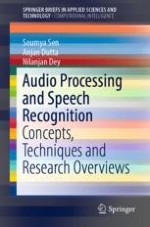This book offers an overview of audio processing, including the latest advances in the methodologies used in audio processing and speech recognition. First, it discusses the importance of audio indexing and classical information retrieval problem and presents two major indexing techniques, namely Large Vocabulary Continuous Speech Recognition (LVCSR) and Phonetic Search. It then offers brief insights into the human speech production system and its modeling, which are required to produce artificial speech. It also discusses various components of an automatic speech recognition (ASR) system. Describing the chronological developments in ASR systems, and briefly examining the statistical models used in ASR as well as the related mathematical deductions, the book summarizes a number of state-of-the-art classification techniques and their application in audio/speech classification. By providing insights into various aspects of audio/speech processing and speech recognition, this book appeals a wide audience, from researchers and postgraduate students to those new to the field.
